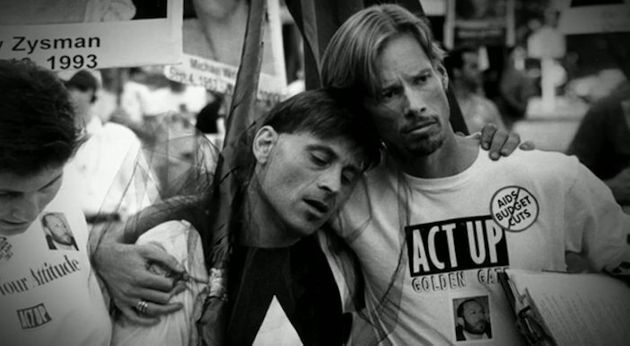This powerful multi award winning documentary was released in 2013, to much critical acclaim. Weissman's film is one of the first to reflect on the impact of the AIDS crisis on the gay men of San Francisco.
The documentary unfolds through a series of interviews with a hospital worker and AIDS counsellor, an activist, an artist, a florist and a nurse and footage from the eighties. The devastating impact of the "gay cancer" which threatened to annihilate a community is keenly felt, but the documentary also highlights how the queer community worked together as friends, lovers, activists and medical professionals, to look after the sick and the dying.
The documentary is a powerful and moving account of the AIDS epidemic. Director David Weissman works with co-director Bill Weber to great impact, using survivors accounts to recall the struggles faced by a lost generation.
The impact the AIDS epidemic had in San Francisco is staggering. The documentary shows endless faces of the men whose deaths featured in a local newspaper, the grainy black and white photos spanning multiple pages. The film also touches on the AIDS Memorial Quilt which was first conceived in 1985 by Cleve Jones, a gay rights activist based in San Francisco. The Quilt contains panels with names of those who had died from AIDS, and was displayed for the first time in Washington, D.C. We Were Here shows the unveiling of the Quilt, which covered a space larger than a football field and included 1,920 panels.
The documentary is a powerful and moving account of the AIDS epidemic. Director David Weissman works with co-director Bill Weber to great impact, using survivors accounts to recall the struggles faced by a lost generation.
The impact the AIDS epidemic had in San Francisco is staggering. The documentary shows endless faces of the men whose deaths featured in a local newspaper, the grainy black and white photos spanning multiple pages. The film also touches on the AIDS Memorial Quilt which was first conceived in 1985 by Cleve Jones, a gay rights activist based in San Francisco. The Quilt contains panels with names of those who had died from AIDS, and was displayed for the first time in Washington, D.C. We Were Here shows the unveiling of the Quilt, which covered a space larger than a football field and included 1,920 panels.
The documentary charts the hedonism and liberation of the seventies, continuing to the eighties when the first signs of AIDS began to present themselves. The film gives us statistics which capture the scale of the epidemic, noting that by 1981 some 20% of the gay male population was already infected with the virus, a number which rose to 50% by the time a test was available. Over 15,000 people in San Francisco had died of AIDS by the mid-nineties.
Interviews are punctuated with photographs of smiling loved ones, lost to the disease and forever caught in time. There is footage from the hospitals and rallies, recalling a time of desperate uncertainty and almost incomprehensible death, with inadequate responses from the government and a significant rise in homophobia. However, despite its harrowing content and subject matter, We Were Here is also a story of human courage and support. It focuses on those who lived and worked with the dying, and highlights a tremendous sense of community support.
The documentary does not attempt to bring the issue of AIDS back to the present, to explore the way HIV is still stigmatised, nor does it attempt to discuss the experiences of those presently living with HIV in America or the impact of AIDS in other continents. We Were Here is, in a sense, introspective, focused on a particular community in San Francisco, at a particular moment in time.
From this perspective, We Were Here is a comprehensive and moving account of the impact of the AIDS epidemic on those living or socialising in San Francisco's Castro District. For all its tough content, the film also evokes a deep sense of community resilience, survival and pride.
Interviews are punctuated with photographs of smiling loved ones, lost to the disease and forever caught in time. There is footage from the hospitals and rallies, recalling a time of desperate uncertainty and almost incomprehensible death, with inadequate responses from the government and a significant rise in homophobia. However, despite its harrowing content and subject matter, We Were Here is also a story of human courage and support. It focuses on those who lived and worked with the dying, and highlights a tremendous sense of community support.
The documentary does not attempt to bring the issue of AIDS back to the present, to explore the way HIV is still stigmatised, nor does it attempt to discuss the experiences of those presently living with HIV in America or the impact of AIDS in other continents. We Were Here is, in a sense, introspective, focused on a particular community in San Francisco, at a particular moment in time.
From this perspective, We Were Here is a comprehensive and moving account of the impact of the AIDS epidemic on those living or socialising in San Francisco's Castro District. For all its tough content, the film also evokes a deep sense of community resilience, survival and pride.

